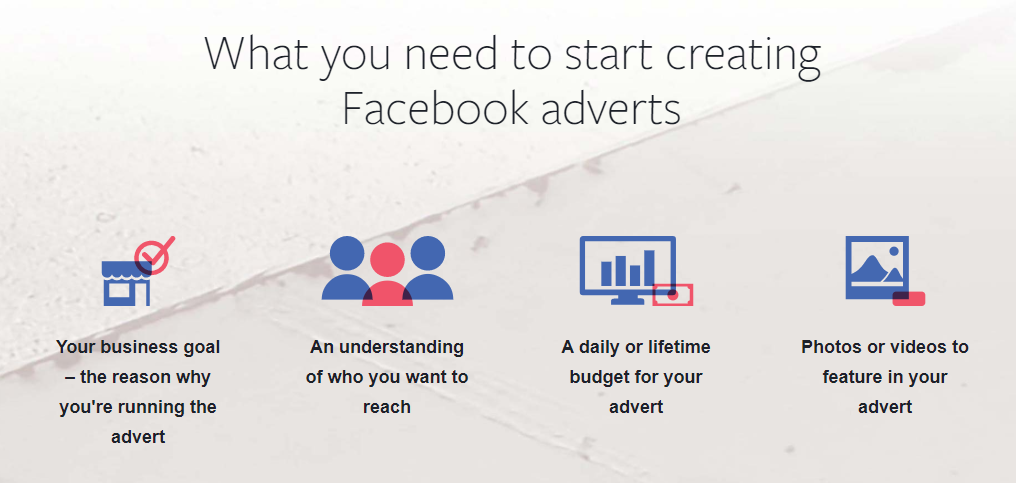Content Marketing Myths You Need to Stop Believing Immediately

The digital media marketing landscape is always changing.
It’s the reason that we’re always researching the latest strategies, trying to figure out what the next move should be on the road to content marketing success.
Content marketing has never been more important for businesses, as you can tell by the MarketingProfs image below.

Which is great! Except there’s just one problem.
With all the information that’s constantly being shared, there are a few cases where bits and pieces of information have been less than accurate.
I’ll be honest with you. I’m not a fan of misinformation.
That’s why today I’ve decided to tackle some of the biggest myths that I’ve noticed in the industry today.
Content marketing is difficult enough as it is without any of this misinformation floating around.
If you’re curious about any particular topic, feel free to click on the links below and hop around.
Of course, I strongly recommend that you come back and read this article from top to bottom once you’ve satisfied your curiosity.
Whether you’re familiar with the topics or not, you’re bound to learn something new by reading through this entire article.
1. Content marketing only works for certain types of businesses
This list isn’t arranged in any particular order, but it’s worth noting that this is one of the most common myths I’ve heard over the years.
To clarify, content marketing is not an industry-specific style of marketing. There’s no particular business that is “best suited” for content marketing.
At the end of the day, content marketing is just a form of storytelling. And any business is capable of telling interesting stories, once you understand what that means.
Airbnb, a business that could’ve easily run with the idea that they’re cheaper than hotels, instead chose to tell the story of life and travel, which you can see below.

And that’s the important part. Any business can create high-quality content, whether they’ve got plenty of experience with content marketing or not.
That actually brings up a good question. If any business can pull this off, how exactly would you go about doing this?
If you’re looking to create top-notch content, you’ll need to make sure you’ve covered two issues.
The first aspect of creating great content is making sure that it offers tangible value in some way.
It doesn’t matter if the content is entertaining, inspirational, or educational.
All that matters is that the content provides your audience with something that will inevitably strengthen your brand.
Consider the sheer value that Buffer gives away with their articles on a weekly basis.

The second aspect of creating top-notch content is your ability to make that content engaging.
Listen, having a few great pieces of advice is a good place to start.
But it’s 2017. The marketplace is taking no prisoners, and if you want to stand out, you’re going to have to do more than just offer the bare minimum.
And what does it mean to create engaging content?
Easy. The focus should be less on self-promotion and more on the way the story is being told.
Think of it this way: Compelling storytelling is the bridge between your audience and the value you’d like to give them.
2. Anyone can create quality content
Okay, so remember how I just said that any business can create quality content?I say that because I truly believe that any business can tap into the needs of their audience and create content for them that actually makes a difference in their lives.
But I never said anyone could create that.
The reality of content creation is that it’s like fixing a car. The simpler stuff, you can probably do on your own.
But once you start dealing with the more complex issues, you’re better off leaving it to the professionals.
If you or someone on your team has experience creating content, then more power to you.
But if neither you nor anyone you work with has any experience with this, you’re going to have a much better time hiring someone else to handle it for you.
I’m sure some people are reading this right now and thinking, “It’s just writing! It can’t be that hard.”
Okay, let’s forget about the fact that creating impactful stories is something that’s actually pretty challenging on its own.
Even without that aspect, you still have to deal with the constant production of content.
Whatever your content calendar was, you’d likely be publishing anywhere from 1-2 pieces of original content to start.
And honestly? That’s going to be much harder than it sounds. There’s a reason there are agencies, like Creative Circle, offering to handle it for you for some cash.

What we’re really talking about here is not whether or not you can make those pieces of original content.
The question is, can you do it well?
Only you and your team members know the answer to that, but it’s important to take an honest look at yourselves and avoid underestimating the difficulty of this process.
Trust me, it’ll save you a lot of time in the long run.
If you can’t handle it, go ahead and look for an extra set of hands with experience creating content.
There will be no shortage of people excited to work with you, but a word of advice.
Don’t instantly go with the cheapest option. Make sure you do your due diligence before you hire someone who isn’t ready to handle your content marketing needs.Check writing samples. During the interview, get a sense of who they are and what they’re capable of.
Once you’ve found the right person, you’ll be in a much better position to dominate the content marketing scene.
3. Purely text-based content is enough
This myth is actually fairly common among first timers, which is a shame since it’s crucial to understand this early on in your marketing career.
To be honest, I can understand the confusion on this one.
When the average person thinks about content marketing, they’re probably imagining a blog post or an article.
But the industry is changing. Just look at the statistics of Facebook posts with visuals versus those without.

And let’s face facts. Most content that’s being put out today might have a cover image at the top, but that’s about it.
Unfortunately, the idea that this is enough to propel you to the top is a recipe for disaster.
If you’re looking to create the best kind of content possible, you’re going to need to build content with several different layers.
That probably sounds a bit intimidating, especially if you’re new to all this.
But there’s no need to worry. The blueprint for multi-layered content is actually pretty easy to wrap your head around.
The first component is your copy, of course. That needs to have tangible value beyond leading people directly to your product or service.
Beyond that, you’ll want a visual component included in the article as well.The easiest one to start with is images, and it’s what I’d recommend most businesses start with.
The images don’t have to be National Geographic material. The most common images that I see used are screenshots, stock photos, and infographics.
I’m not a huge fan of stock photos (I can’t really see the value in a generic image), but screenshots and infographics are great tools for anyone creating content.
Just look at this statistic for infographics, provided by HubSpot.

Not only do infographics help break up those giant blocks of text and keep your reader from getting bored, but they also add context to whatever topic your article is covering.
Of course, that leaves everyone’s favorite type of visual content: video.
To be clear, video marketing is definitely one of the most powerful tools that you have at your disposal.
The growth of mobile video alone in 2016 was incredible, as you’ll see below.

If you can find a way to incorporate it into your content, I strongly suggest you do.
That being said, I’d definitely consider creating video content to be one of the harder things for a business to do successfully, so don’t be afraid to avoid this particular hurdle for now.
4. Content marketing must deliver sales to be considered successful
If I had to guess, I’d say that this next topic is the reason that most businesses without a content marketing strategy aren’t interested in one.
Looking at content marketing from a purely ROI perspective, it’s easy to say that since it doesn’t directly deliver sales, it’s not worth investing in.
The funny thing is that content marketing can deliver sales, but it can also deliver so much more.
Consider this funnel infographic that Bluewire Media put together.

What I like most about content marketing is its versatility. See, different content can serve different purposes in the sales and marketing funnels.
Does all of it directly lead to sales? No. But that hardly makes it worthless.
Instead of fixating on sales when it comes to content marketing, determine some realistic goals that contribute to your business but go beyond the scope of sales.
Are you looking to boost traffic? Conversion rates for an e-book? Signups for a newsletter?
Sales are important, of course. But there are other metrics that top-notch content marketing can have an impact on.
Learn to define what constitutes a meaningful conversion, and focus on creating content that encourages that.
5. Having unrealistic expectations about cost
Earlier, we talked about the misconception that anyone can create quality content.
If we dig a little deeper, we can see that another huge point of confusion is the issue of paying content creators.
There are basically two types of cost expectations that are unrealistic.
The first side seems to think that hiring another team member, even for something as valuable as marketing, is just too expensive for their business to afford.
Nothing could be further from the truth. The average content marketer/writer today will charge you anywhere from $20-$50 an hour.
Here’s a look at some of Upwork’s top-rated writers, for instance:

The idea that it’s too expensive simply isn’t true, with even a humble marketing budget being strong enough to handle one of these new team members.
Then there’s the second side, which expects their writers to write for free (or close to it).
This is also not a great idea since the caliber of writer you’d hope to attract is likely going to lose interest the moment they see that you’re not willing to pay much.
Will you be able to find writers? Sure. And some of the content might be amazing.
Who knows? Maybe they were just being undervalued.
But for the most part, you’re going to get your money’s worth. And if you’re spending “good enough” money, you’re going to end up with “good enough” content.
You don’t need to break the bank to end up with respectable content. But you can’t expect to get above-average content at a below-average price.
6. You can expect results quickly
Seeing the results of your hard work is always a great feeling.
Unfortunately, it’s a feeling that you probably won’t experience right away when it comes to content marketing.
The reason is actually simple enough.
It takes time to become an online authority. Google has to find your posts, and so does everyone else.
There are certain things you can do to jumpstart that process.
For starters, you need to make sure that your content is being promoted on social media.
If your business doesn’t have a ton of money, that free social media promotion can make all the difference in the world.
If you’ve got a larger marketing budget, you can promote using Facebook ads to speed up the process.
You don’t even need that much to get started, according to Facebook’s business page.

But no matter how much time you try to save, there’s no getting around the fact that when it comes to search engines and the industry, you’re going to have to wait to see the results.
7. Creation is all that matters
Listen, I love talking about the creation of engaging, high-quality content.
But I’d be lying if I said that creation was the most important piece of this puzzle.
If I’m being honest, the creative process has many other aspects that give us successful content marketing.
The planning stage is arguably one of the most important when it comes to content marketing.
There’s no understating the importance of establishing a series of realistic, attainable goals at the beginning of your content marketing campaign.
Aside from being a great tool to use when holding yourself accountable for metrics, the planning stage also gives you the opportunity to create a promotion plan.
There are a variety of different ways you could approach promotion, but what really matters is that you have a plan for how to share this with the world.
Conclusion
Look, I get it. This is a lot to process, but it’s important that these myths stop circulating.
Just remember that content marketing works for any type of business.
It takes a special kind of person to write for a living, so don’t just throw that job to anyone.
Your business deserves more than just text-based content.
Content marketing is about more than just sales.
Be ready for an investment, but you’ll definitely get what you pay for.
Stop expecting instant gratification, and plan ahead.
If you can do all of that, then you’ll be several steps closer to reaping the benefits of content marketing.
What’s the craziest content marketing myth you’ve ever heard?
What’s your opinion on quality versus quantity as it relates to content?
The post Content Marketing Myths You Need to Stop Believing Immediately appeared first on Neil Patel.




Comments
Post a Comment